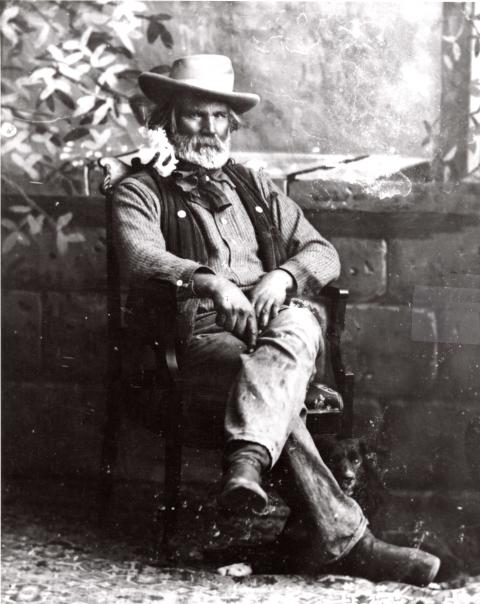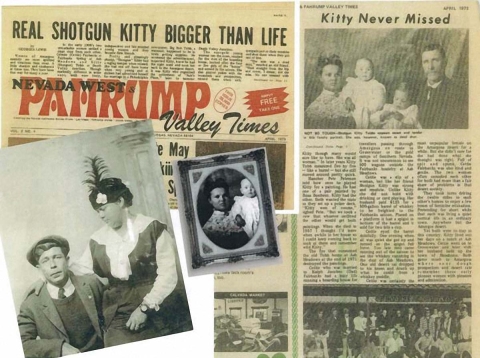About Us
Ash Meadows National Wildlife Refuge was established June 18, 1984. Managed by the U.S. Fish & Wildlife Service, the refuge protects threatened and endangered species, many of which occur nowhere else in the world. It encompasses over 23,000 acres of spring-fed wetlands and alkaline desert uplands. The name Ash Meadows refers to the abundance of ash trees once found in the area.
Our Mission
The mission of the National Wildlife Refuge System is to administer a national network of lands and waters for the conservation, management and, where appropriate, restoration of the fish, wildlife and plant resources and their habitats within the United States for the benefit of present and future generations of Americans.
Our History
Nuwuvi and Newe Prosper in Ash Meadows
For thousands of years, Southern Paiute (Nuwuvi) and Timbisha Shoshone (Newe) settled near the spring pools of Ash Meadows. They lived off the land by tending to corn, beans, squash, and sunflowers; cultivating nutritious mesquite seed pods; and hunting small game. From their Ash Meadows homes, they traveled to the Spring mountains to gather pinyon pine nuts, hunt mountain sheep, and exchange news with friends and relatives.
Their connection to the land was strong and remains strong today. Many descendants live in nearby communities in Southern Nevada and on the Timbisha Shoshone Reservation in Death Valley, California. The old archaeological sites, historical home locations, mesquite groves, and crystal pure waters of Ash Meadows continue to play an important role in their modern culture.
“We treat everything on the land as our relative because it is alive, has a voice, and deserves the utmost respect. This is how we treat each other using the songs and stories of the land." - Nuwuvi and Newe Working Group
Pioneers Move In
Living among the Southern Paiute and Timbisha Shoshone was one of the first pioneers in Ash Meadows. He went by the name Jack Longstreet, but his real identity remains a mystery. The only clues to his past were his southern drawl and ability to read and write reasonably well, unusual for most folks at that time.
Jack Longstreet found work as a cattle rancher, saloon keeper, and prospector. He even earned a living as a hired gun and made a notch in his weapon for each person he killed, including his brother-in-law. It has been written that this powerful broad-shouldered man with the sparkling blue eyes was feared by many but found companionship and respect with the Native American tribes.
In 1896, he built a stone cabin near a spring that still bears his name. Today, the Longstreet Spring and Cabin are among the highlights of the refuge. To learn more about the Wild West and Jack Longstreet, we suggest a book by Sally Zanjani called Jack Longstreet; Last of the Desert Frontiersmen.
Another colorful character in Ash Meadows was Shotgun Kitty, a mail-order bride from Philadelphia. She always carried a shotgun and according to most . . . never missed a shot!
Ash Meadows Goes Commercial
After these first pioneers arrived in Ash Meadows during the late 1800s and early 1900s, agricultural activity began to alter the desert ecosystem. By the 1960s, the oasis had even bigger challenges to face. Carson Slough, a large spring discharge area in Ash Meadows, was mined for its rich, nutrient dense peat — a process that eventually destroyed about 2,000 acres of vital wetland.
Once the peat deposits were depleted, Carson Slough was purchased by Spring Meadows Inc., a cattle ranching operation. To accommodate the roughly 1800 head of cattle, they bulldozed sand dunes, replaced winding streams with concrete ditches, and diverted spring flow to create giant reservoirs. All this activity effectively eliminated many endemic populations of flora and fauna.
Devils Hole Pupfish Saves the Oasis
Every year, Cappaert Enterprises (formerly Spring Meadows Inc.) pumped increasingly more groundwater to maintain their ranch. Water levels soon began to drop in Devils Hole, a deep limestone cavern in Ash Meadows that is a detached unit of nearby Death Valley National Park. This posed a serious threat to the Devils Hole pupfish, a federally listed endangered species that depends on adequate water levels for feeding and reproduction.
The immediate threat to the pupfish initiated a series of court battles leading to the Supreme Court's 1976 decision to limit pumping of existing wells and prohibit the installation of any new ones.
Cappaert Enterprises soon sold their water rights and land to Preferred Equities Corporation (PEC), a development company based in Las Vegas. PEC began planning a new resort community of homes, hotels, an airport, shopping, and more.
The Nature Conservancy moved quickly to thwart the plan, noting:
At no time in Ash Meadows' history has the viability of this impressive natural area been more threatened than now. Preferred Equities Corporation, a Las Vegas development concern, currently has approved plans for a 25,000-lot subdivision on 12,653 acres at the heart of the Ash Meadows Valley. Once completed and fully populated, Preferred Equities' development will virtually assure the extinction of the region's large numbers of already threatened fish, plant and invertebrate species.
In 1984, The Nature Conservancy successfully facilitated the sale of the land between PEC and the U.S. Fish & Wildlife Service. Ash Meadows officially became a national wildlife refuge national wildlife refuge
A national wildlife refuge is typically a contiguous area of land and water managed by the U.S. Fish and Wildlife Service for the conservation and, where appropriate, restoration of fish, wildlife and plant resources and their habitats for the benefit of present and future generations of Americans.
Learn more about national wildlife refuge that same year. Efforts began, and continue today, restoring the ecosystem for native plants and animals.
Ash Meadows Becomes A Ramsar Site
The Ramsar Convention is an international organization committed to conserving wetlands. Each year wetlands from around the world are identified for their importance, and if one fits the criteria, it is designated a Ramsar Site. The convention aims to protect these special ecosystems because, in their words:
Wetlands are vital for human survival. They are among the world’s most productive environments; cradles of biological diversity that provide the water and productivity upon which countless species of plants and animals depend for survival.
In 1986, Ash Meadows became the 4th Ramsar Site in the United States. To learn more, visit Ramsar.org
Our Future
For nearly 40 years, biologists, students, volunteers, and community members have worked together to help restore this important ecosystem. While much progress has been made, there is still much to do. Ash Meadows is a critical source of desert biodiversity and relies on the collaborative effort of individuals dedicated to its continued protection.
Other Facilities in this Complex
Ash Meadows National Refuge is part of Desert National Wildlife Refuge Complex. Desert National Wildlife Refuge Complex consist of four Wildlife Refuges: Ash Meadows National Wildlife Refuge, Moapa National Wildlife Refuge, Desert National Wildlife Refuge, and Pahranagat National Refuge.








